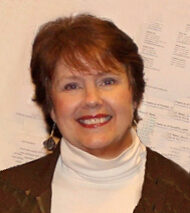
Nancy Huntting, Aesthetic Realism consultant, writes:
A huge matter that hasn’t been understood is: What is the relation of art and science? Also: What do both art and science say about what a thing is and how we should see it?—and the word thing includes every fact, every human being. Answers to these questions—answers urgent for us and our nation—are in “Things—& How We Want to See Them,” the vitally important new issue of The Right of Aesthetic Realism to Be Known.
The commentary by Ellen Reiss begins:
Dear Unknown Friends:
We begin today our serialization of a lecture Eli Siegel gave in 1969: A Thing Has This. It is one in a series on a tremendous subject not understood before: the relation between art and science. These have seemed in different worlds to people, as feeling and logic have seemed in different worlds. Among Eli Siegel’s great contributions to thought and humanity is his showing that art and science are, in all their difference, also fundamentally akin; and that—further—they both have to do with the tumults, hopes, intimate worries, longings, angers, desires of every person. “Self, the arts, the sciences explain each other,” he wrote: “they are the oneness of permanent opposites.” Among the examples he gave is this:
Every person has a tendency to retreat, to “be in oneself,” and every person has a tendency to go out, to honor outwardness, to welcome expansion….The contraction and expansion in chemistry, physics, geology, are in the person. [And] a work of art is tight and expansive at once. It seems to have a depth within itself, as it goes luminously, sometimes grandly, into space and the whole of existence.
Art & Science Oppose Contempt
In A Thing Has This, Mr. Siegel is showing that 1) the matter of what a thing is, is a fundamental, also urgent, matter in both science and art; and 2) art and science are in firm though unarticulated accord on the subject.
He is showing that at the basis of both art and science is the fact that a thing—any thing, each thing—is “everything it has”; and included in this everything are all its possibilities. A thing “is not just the part you want to see or do see.”
The aesthetic and scientific matter of what a thing is is also an emergency in every person’s life, and the life of a nation. The not trying to see things and one’s fellow humans in all their fullness is oh so ordinary. The seeing “just [what we] want to see” goes on constantly, and it causes in people a dullness of response and narrowness of perception. Meanwhile, this unscientific, unartistic way of looking at things—not with a desire to see their wholeness, but in terms of what suits oneself—is the beginning of lying, including tremendous and persistent lying, and also of massive cruelty. In his preface to Self and World, Mr. Siegel explains…Read more